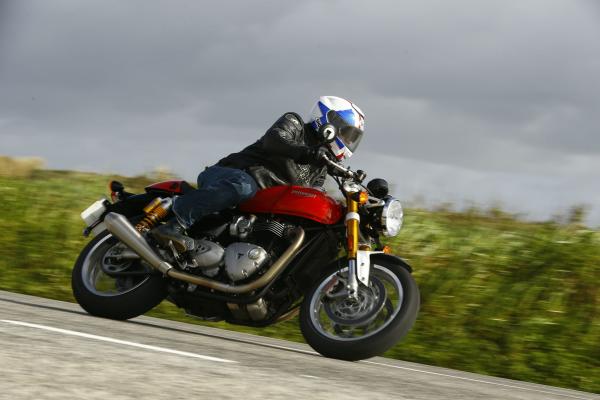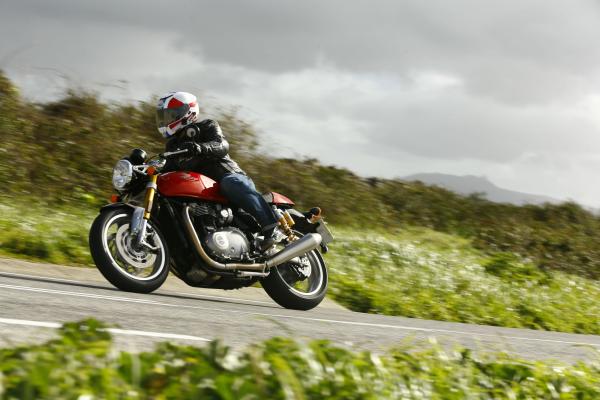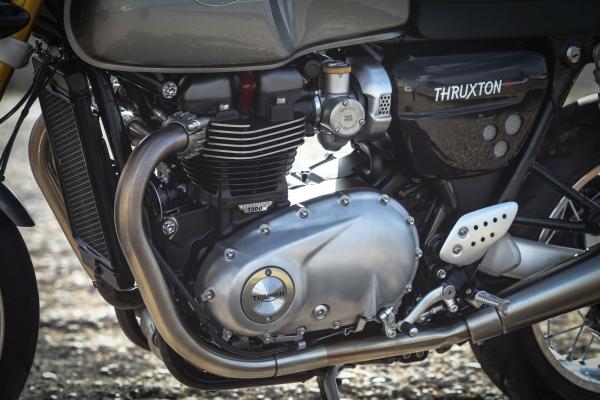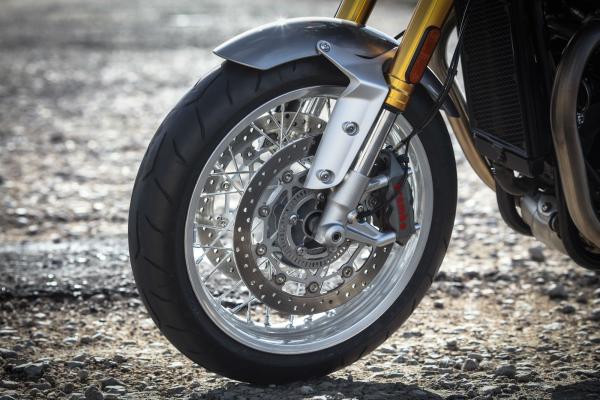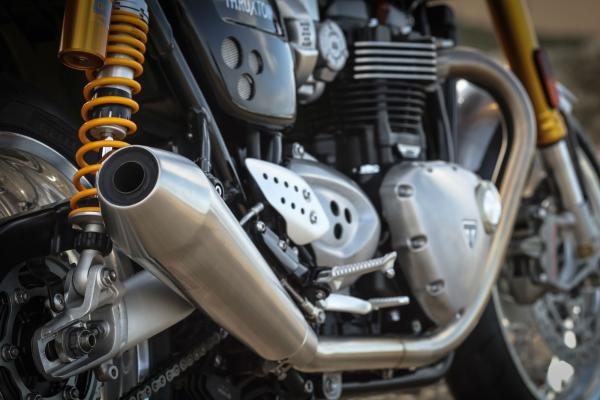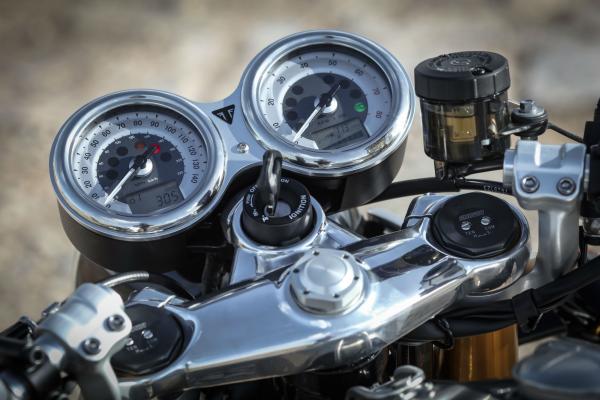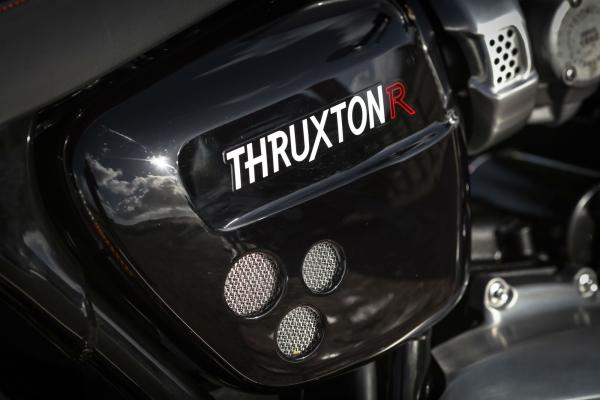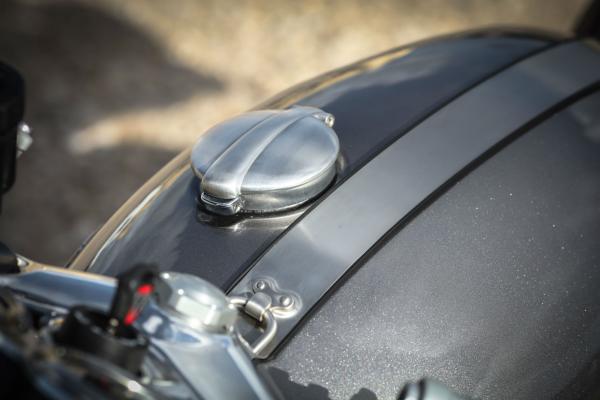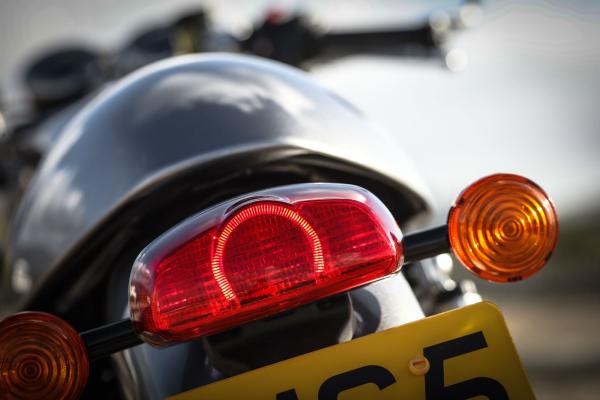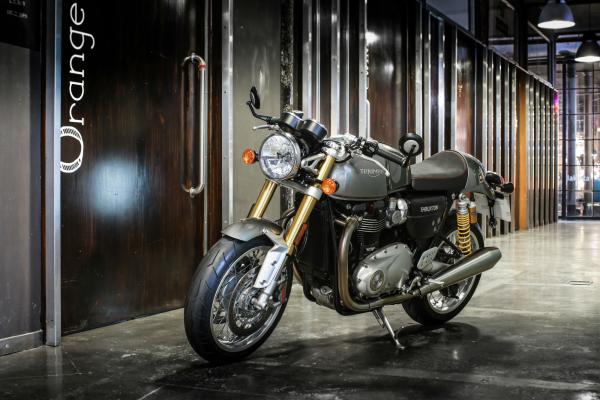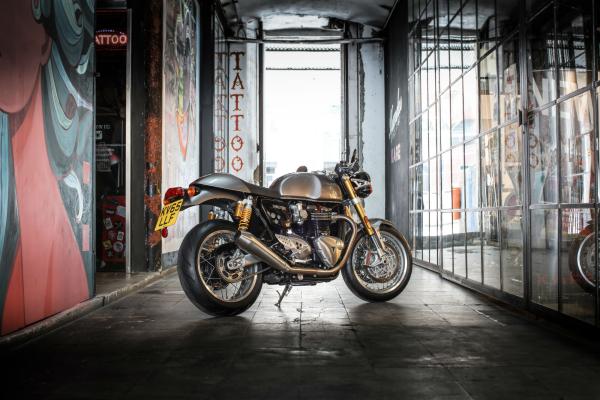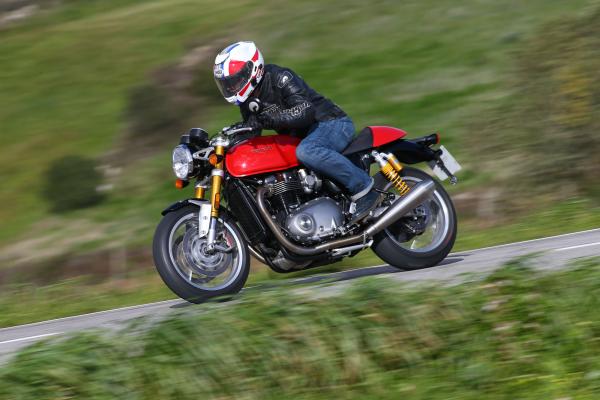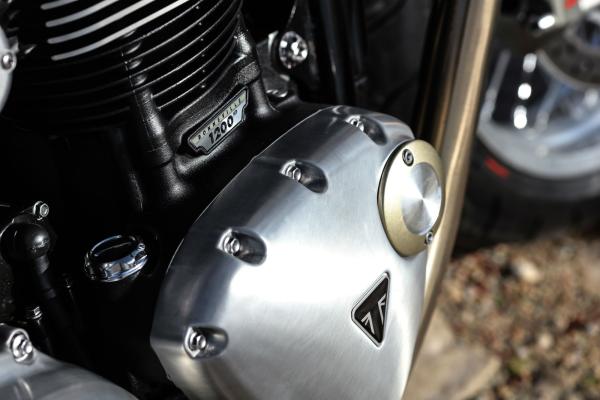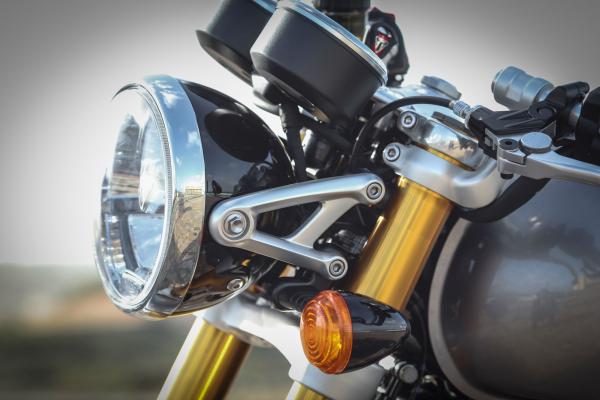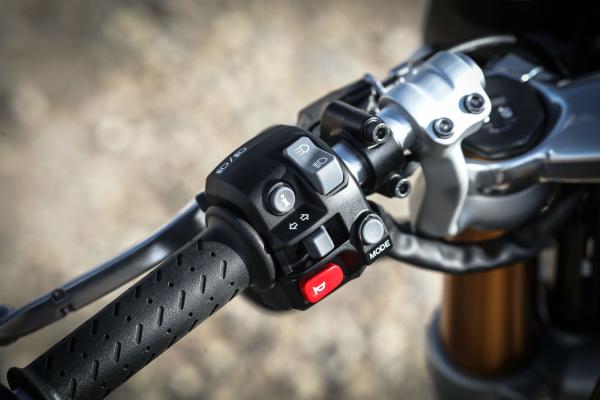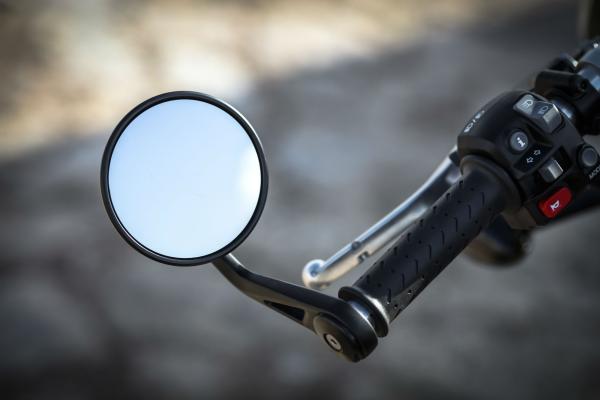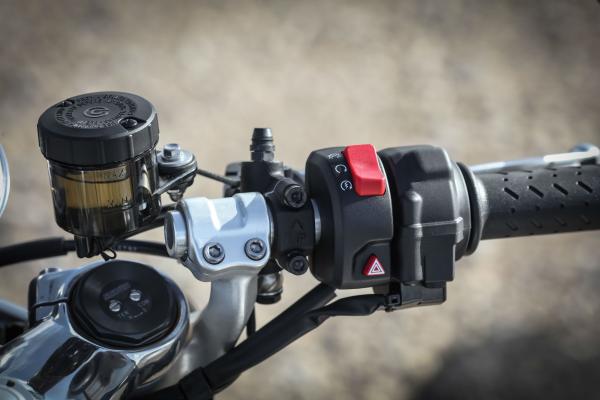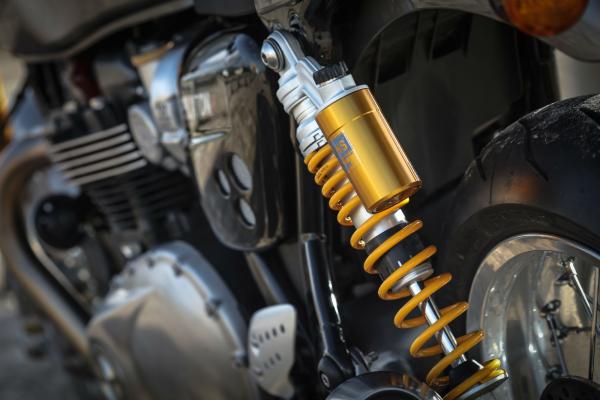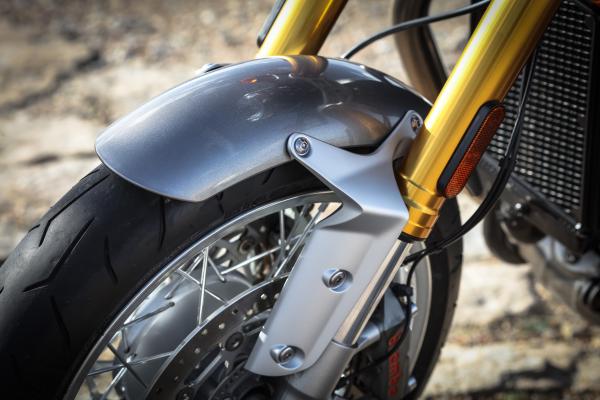First ride: Triumph Thruxton R review
BMW's R nineT just got a big new problem

Member for
54 years 8 monthsIT'S funny how riding a bike can change your mood and mind-set. The machine that just did it for me is the new Triumph Thruxton R.
Journalists rode it after a morning on the new T120 Bonneville. That's a very likeable bike, which you can read more about in my full review of it, but it took an instant on the Thruxton R to know this was something very different. It might have been the rumbling engine note, a rumble you feel as much as hear. It might have been the focused riding position, with clip-on bars and weight on your arms. It might have been the sharp steering and powerful brakes. It might have been the burst of torque from 2,000rpm.
Probably it was all these things. The message is: engage your brain and put your riding head on, because this is a bike for tear-arsing around.
And that's what it makes you do.
Like the T120, it’s got a new 1200cc liquid-cooled parallel-twin engine, but with a very distinct feel thanks to a range of differences including high-compression cylinders and a larger air-box. It’s the ‘high-power’ version to the T120’s ‘high-torque’. Service intervals for both are 10,000 miles, up from 6,000.
It might be the high-power version but no one has told that to the torque it makes in the low-to-mid-range. In fourth, at about 3,500rpm, which is about 50mph, rolling on the throttle brings decisive acceleration, accompanied by a good, loud bark from the exhaust. I kept blipping the throttle whenever I slowed down and pulled in the clutch, just to hear it again, without competition from wind noise.
And it’s only just getting started, with peak power just a hair's breadth from the 7,000rpm red line. That peak is 97hp at 6,750rpm, so it’s not outrageously powerful by modern standards, but it's a bike that makes achieving a good pace easy.
Unlike the T120, which is possibly best enjoyed at an unstressed and torquey 5,000rpm, the Thruxton R goads you to spend more time around that peak. And when you’re not, it’s still fast. Frequent gear changes are light on the wrist thanks to a torque-assist clutch.
The tubular steel cradle main frame is new, and the same as the T120’s, but with a different sub-frame welded on. The head-stock angle is steeper and the trail and wheelbase shorter than the outgoing model’s.
Triumph seem to be one of the few manufacturers to still quote dry weight figures. At 203kg, the Thruxton R doesn’t look especially lightweight on paper despite the tactic, but the ease with which it turns makes the figure seem an irrelevance. The front-end feels stable, easily directed and confidence-inspiring, with a good sense of connection to the tyre through the low bars.
The ‘R’ in the name points to this being the higher-spec version of two variants of the machine. It differs to the base-model Thruxton in its suspension and brakes as well as styling. Where the Thruxton has a Nissin front caliper, the R has radial monobloc Brembo calipers on twin floating discs. The Brembos don’t have astonishing initial bike but there’s a big supply of power as you increase the pressure on the lever, with two fingers all that’s required. The rear brake also offers a good sense of progressive stopping force.
The Thruxton R benefits from twin Öhlins shocks and upside-down big-piston Showa forks, with full adjustability at both ends. It’s firm and sporty, offering good feedback from the tyres, which also differ from the Thruxton’s. Where the latter has Pirelli Angel GTs, this one has Pirelli Diablo Rosso Corsas. They offered confidence throughout the test ride in Portugal, which included brief spells of rain.
Other differences between the two Thruxtons include the exhaust, which is chrome on the base model and stainless steel on the R.
There are three riding modes – Sport, Road and Rain - offering varying degrees of torque in response to a given throttle input. I’m sure you can work out which is the softest and which the most aggressive.
The electronics package also includes traction control and ABS, both of which can be switched off.
Switching between riding modes is simple, using one button on the left bar, but you have to close the throttle and pull in the clutch to finalise the choice on the move. You also have to pull in the clutch to start the Thruxton R, even in neutral.
Switch off the ignition for more than a few seconds and it reverts to Road mode.
I felt inclined to put it in Sport and leave it there, for the most immediate access to that mid-range punch. That’s what this bike feels like it’s for.
Although the engine makes itself known through the bars and seat at some speeds and revs, the vibes fade on the motorway. At an indicated 80mph in sixth, they’ve receded to a very tolerable level.
Part of the Thruxton R’s character clearly lies in its styling, and the quality of finish looks for the most part impeccable. The polished top yoke is a thing to behold. The radiator is discreet enough for the untrained eye to miss, with hoses tucked away. According to Triumph, the fins on the cylinders are not just for show but actually contribute to cooling efficiency, allowing the radiator to be smaller than it otherwise would. The expansion tank is also hidden, tucked behind one of the side panels.
The tank is beautifully proportioned, long, sleek and narrow between the knees, and complimented by the brushed stainless steel strap and Monza-type filler cap (which classic-bike geeks may notice opens the wrong way round). Underneath it is a more conventional locking filler cap.
If you want, you can add some of your own styling preferences with one Triumph’s ‘inspiration kits’ of accessories, including one called ‘Tracker Racer’, which features a café-racer-style cockpit fairing. There are 160 official accessories in total.
Only a few styling details seem to fall short. The brackets attaching the mudguard to the forks look like they’re made from the same aluminium as the headlight brackets, but they’re plastic.
As I looked from that very appealing top yoke to the handlebar switch-gear, I wondered if the latter couldn’t be a little more sympathetic to the period look. It could be off any modern bike.
The clocks are less of a continuity error, two big dials with black numbers on a silver face, and on the whole easy to read at a glance, although the flashing indicator light is small enough to miss.
Information includes fuel range as well as current and average fuel consumption, plus a gear indicator. According to the clocks, my bike had averaged 50.3mpg by the end if the test ride, while Triumph claims it will do 61mpg. It means a range of 160 miles or 194 miles from the 14.5-litre tank, depending on which figure you accept.
Elsewhere, equipment includes a USB charging socket.
The bar-end mirrors are also in good keeping with the rest, and actually show you what’s behind you despite their small size. They do leave significant blind spots but a few extra life-savers doesn’t seem an unacceptable inconvenience.
The Triumph Thruxton and Thruxton R both come with a single-seat unit, with no option to take a passenger unless you buy the dual seat and pillion foot-pegs, available as an accessory. In this respect it differs from one of its closest competitors, BMW’s R nineT, which comes with pillion pegs and a seat that can be swapped for an accessory aluminium cover. Maybe Triumph is right, and the default assumption should be that the modern-classic enthusiast will never need or want to give anyone a lift. I’ve got my doubts.
Towards the end of the ride, the engine stalled mysteriously as I slowed down for a junction. With the throttle closed and clutch in, the revs dropped and then died altogether instead of settling at tick-over. It left me drifting around a corner.
Also toward the end, the seat began to feel a bit hard, firm as it is, and not helped in this respect by the suspension. No doubt this would have been on my mind more if the Thruxton R wasn’t such an engaging ride.
That’s the point of the Thruxton R. It’s a consuming experience from the moment you get on to the moment you get off, with its noise, torque, handling and looks. Like the R nineT, it’s a union of classic style and character with modern components and performance. With a list price £200 less than the R nineT’s, and traction control and riding modes where the R nineT has none, it’s also a big new problem for the German bike.
CLICK HERE TO WATCH OUR VIDEO REVIEW OF THE TRIUMPH THRUXTON R
Model tested: Triumph Thruxton R
Price: £11,700 plus tax and registration (£10,400 for Thruxton)
Engine: 1200cc liquid-cooled eight-valve SOHC parallel-twin
Power: 97hp @ 6,750rpm
Torque: 82.6lbft @ 4,950rpm
Dry weight: 203kg (Thruxton 206kg)
Frame: tubular steel cradle, aluminium swing-arm
Suspension: Showa 43mm USD big piston forks, fully adjustable with 120mm travel. Fully adjustable Öhlins twin shocks with piggyback reservoir and 120mm rear wheel travel. (Thruxton: Kayaba 41mm cartridge forks, 120mm travel; Kayaba twin shocks with adjustable preload, 120mm rear wheel travel)
Brakes: Brembo twin 310mm floating front discs and Brembo four-piston radial monobloc calipers. Single 220mm rear disc with two-piston Nissin caliper, ABS as standard (Thruxton: twin 310mm front discs with two-piston Nissin calipers, single 220mm disc rear disc with two-piston Nissin caliper, ABS as standard)
Tyres: Pirelli Diablo Rosso Corsas, 120/70-17 front, 160/60-17 rear (Thruxton: Pirelli Angel GTs)
Seat height: 810mm (Thruxton 805mm)
Fuel capacity: 14.5 litres
Colours: red, silver, matt black (Thruxton: black, white, green)
